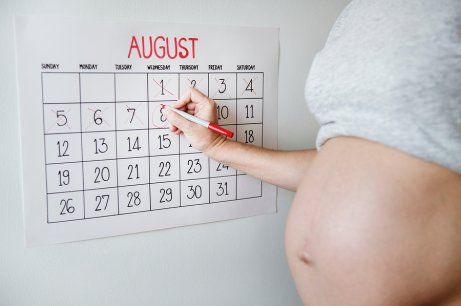Vaginal Tears During Birth: What You Need to Know

Almost all women experience pain both during and after childbirth. Some women also experience what are called “vaginal tears.”
It’s true that the vagina stretches during birth. However, the pressure of babies passing through the pelvis can cause skin and underlying muscles to become tense. This can cause the vagina to tear – an issue that will require repair.
Vaginal tears are quite common during birth. Women who are at the greatest risk are first-time mothers and those who give birth to very large babies.
Finally, mothers who are in labor for a prolonged period of time are also at higher risk of vaginal tears.
Depending on the seriousness of the tear, women may require stitches or special creams. Below, we’ll describe the types of vaginal tears that exist as well as ways to prevent them.
Types of vaginal tears that occur during birth
There are several different types of vaginal tears:
- First degree tear: A small tear in the perineum that only affects the skin. Usually doesn’t require stitches.
- Second degree tear: Additional wounding of the perineum that affects both the skin and the pelvic floor muscles. Requires some stitching.
- Third degree tear: Affects the pelvic floor muscles to a greater extent, stretching to the anal sphincter.
- Fourth degree tear: Occurs when the tear extends completely from the vagina to the rectum, wounding the entire perineum. Requires suturing in an operating room.
How to avoid vaginal tears during birth?
While there’s no guarantee, certain measures can help to prevent this type of injury. Below, we’ll tell you how to reduce your chances of suffering vaginal tears. Take note:

1. Prepare your body
During the nine months prior to giving birth, women need to prepare their bodies for birth. For example, it’s important to include some sort of exercise in your daily routine throughout gestation.
Among other benefits, exercise improves circulation, which in turn improves skin’s elasticity. It also boosts the flow of blood to the perineum and vagina.
At the same time, we recommend you maintain good nutrition and hydration to care for your skin and muscles. Include foods that are rich in omega-3, low fat proteins and a wide variety of vegetables to complete your healthy diet.
Finally, be sure to get enough vitamin E, vitamin C and zinc, which give your body the ability to stretch and recover after giving birth.
2. Perineal massage
Preparing the perineum during pregnancy reduces the risk of vaginal tears for first-time mothers. Massages can help women become familiar with their own bodies and gain confidence in their ability to give birth.
However, if you’re not comfortable with the idea of perineal massage, remember that it’s not an indispensable requirement.
3. Birthing position matters
Without a doubt, the position you choose when pushing has a major influence on the probabilities of experiencing tears. For example, you can lie on your side with your legs facing up or exercise pressure on the coccyx and perineum. This reduces the size of the pelvic floor and increases your chances of not tearing.
“During the nine months prior to giving birth, women need to prepare their bodies for birth”
When it comes to choosing a birthing position, follow your instincts. Whatever position makes you feel more comfortable is the right position for you. Therefore, you need to move around freely until you find a position that helps you get through your contractions.
In any case, being on all fours (hands and knees) is the position that places the least amount of stress on your perineum.
4. Pelvic floor exercises
Pelvic floor exercises serve to strengthen the muscles of the pelvis. The idea is for the muscles to go back to their normal shape after birth, and also reduce your chances of experiencing incontinence.
Learning to relax your pelvic muscles is also important, since this maximizes the space for your baby to descend. In just a few minutes per day, you can make huge advances in this sense.

5. Avoid episiotomy
Episiotomies are a surgical cut performed on the skin and muscles to enlarge the vaginal opening. Ironically, episiotomies don’t protect the perineum during birth. In fact, they increase your chances of suffering a lesion.
What happens is that, once the cut is made, the baby’s head causes the muscle to tear even more .
Lastly, remember that vaginal tears during birth are, unfortunately, common in a high number of women.
The best thing you can do to recover and reduce the pain is to avoid activities that require effort. Also, take warm water baths to calm the pain, and apply ice packs to relieve swelling.